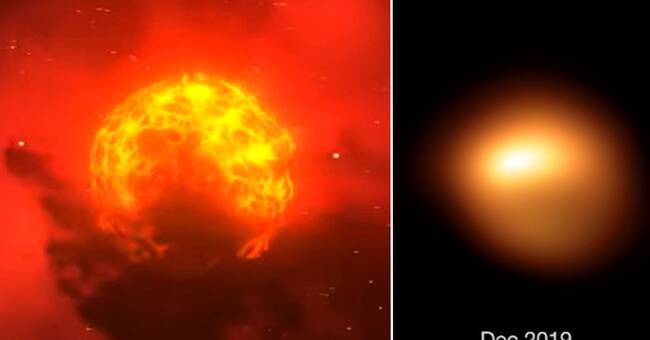- For the first time, they have managed to observe a star at the same time as a large cloud comes out of the star, says Susanne Höfner who is a professor of theoretical astrophysics at Uppsala University.
When Betelguese suddenly dropped in brightness a year and a half ago, both professional astronomers and ordinary people who usually look at the sky were very surprised.
Everyone wondered: What's going on at Betelgeuse?
Astronomers on the first floor
At the same time, an observation program of Betelgeuse was underway at the Very Large Telescope, VLT, in Chile.
French astronomers sat on the first floor and got pictures of the star both before and during this light tap.
Now they have analyzed the pictures and publish the results in this week's Nature.
Betelgeuse is a dying star and the death process includes throwing away his inner self.
But astronomers have never seen this process directly, until now.
Dark clouds obstructed the light
At first, astronomers were able to determine that only parts of the star dropped in brightness.
This indicated that there was a cloud of gas and dust in front of the star that obstructed the light.
When they then analyzed the radiation from this cloud, they could see that the cloud was moving in from the star itself and traveling in a straight line.
Building materials for new planets
- It is important to understand how dying stars throw out material.
The material contains important elements, such as carbon and oxygen, which we and all planets consist of, says Susanne Höfner.
When Betelgeuse has completely run out of nuclear fuel, it will explode in a supernova eruption.
Then the whole star explodes and shines so brightly that for a few days it shines brighter than all the other stars together in our entire galaxy.
- It will probably shine brighter than the full moon and will be visible on bright day, says Susanne Höfner.
But when it happens you can not know.
Supernovae give no warning signals.
The death phase of a supernova candidate has been going on for 100,000 years and we do not know how far Betelgeuse has come.
So Betelgeuse could explode tomorrow or in 100,000 years.
Javascript is disabled
Javascript must be turned on to play video
Read more about browser support
The browser is not supported
SVT does not support playback in your browser.
We therefore recommend that you switch to another browser.
Read more about browser support
Betelgeuse shimmers in red and lies a bit above Orion's belt.
Photo: ESO

